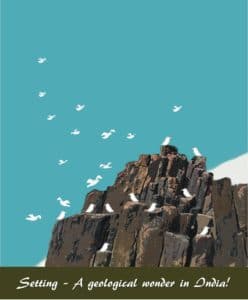‘The more high tech our lives become, the more nature we need.’ – Richard Louv, The Nature Principle
It is common sense that spending time outdoors, in nature is good for all. But as our lives and our children’s childhoods got busier, high tech and demanding, we have lost track of how little time we and children actually spend in nature.
Play has not just moved indoors, but has become confined to a single seat and screen. Entertainment, education, play dates and even exploration happens on screens. If not, still in indoor confined spaces.
In the past decade, the benefits of connecting to nature have been well documented in numerous scientific research studies and publications. Collectively, this body of research shows that children’s social, psychological, academic and physical health is positively impacted when they have daily contact with nature.

In 1984, Harvard University Biologist, Edward O. Wilson introduced and popularized the concept of Biophilia. The biophilia hypothesis suggests that there is an instinctive bond between human beings and other living systems.
In his best selling book, Last Child in the Woods: Saving Our Children From Nature Deficit Disorder, Richard Louv introduced the term ‘Nature Deficit Disorder amongst children in modern societies.’ He says this is resulting in common behavioral problems of today and harming children and societies.
He says,
‘given a chance, a child will bring the confusion of the world to the woods, wash it in the creek, turn it over to see what lives on the unseen side of that confusion. Nature can frighten a child, too, and this fright serves a purpose. In nature, a child finds freedom, fantasy, and privacy: a place distant from the adult world, a separate peace.’
‘I believe the world is incomprehensibly beautiful — an endless prospect of magic and wonder.’ — Ansel Adams, photographer and environmentalist.
